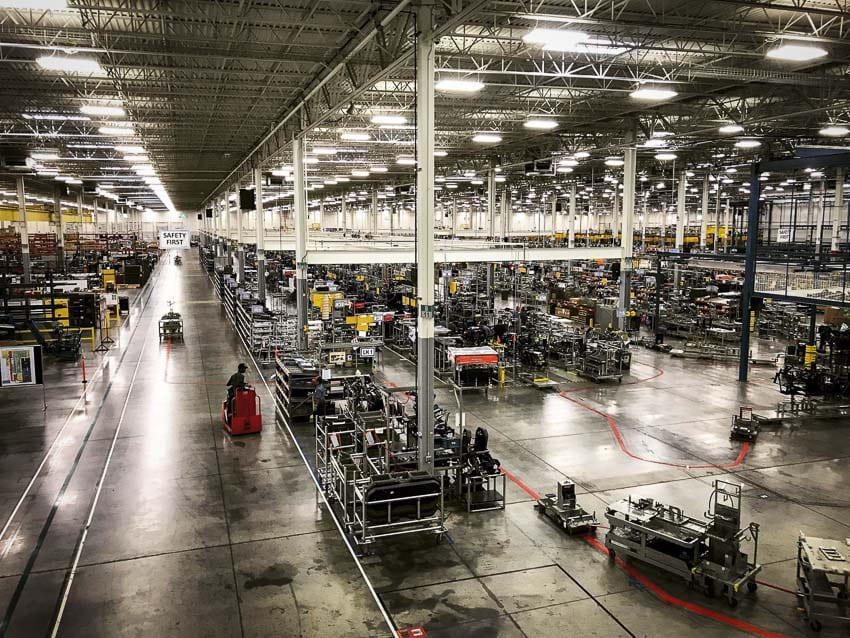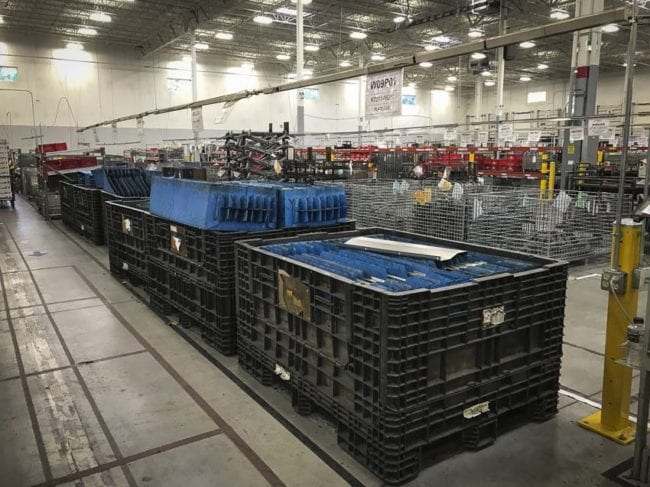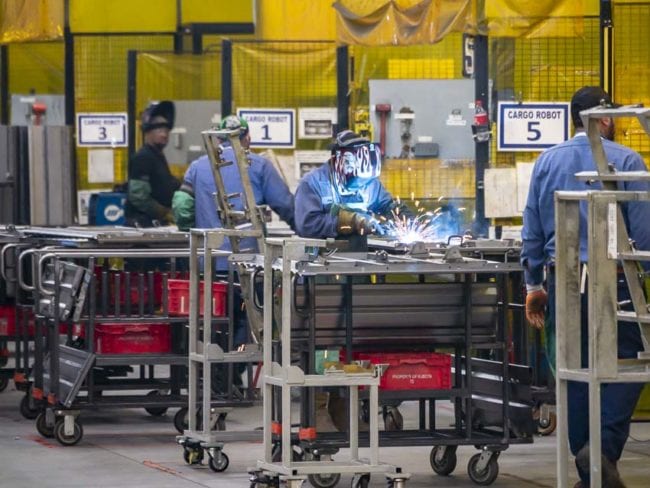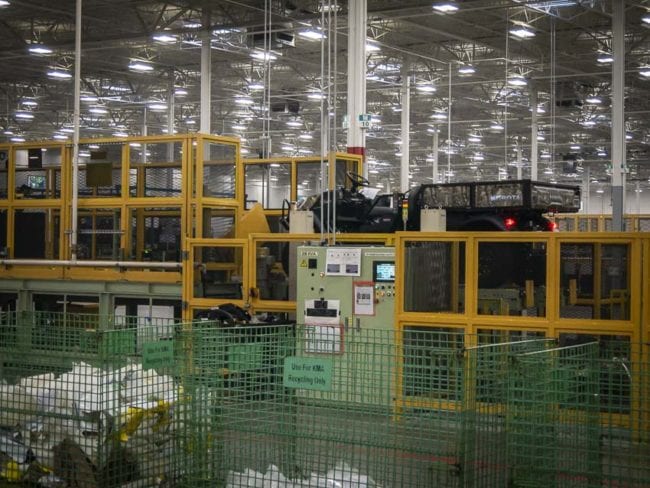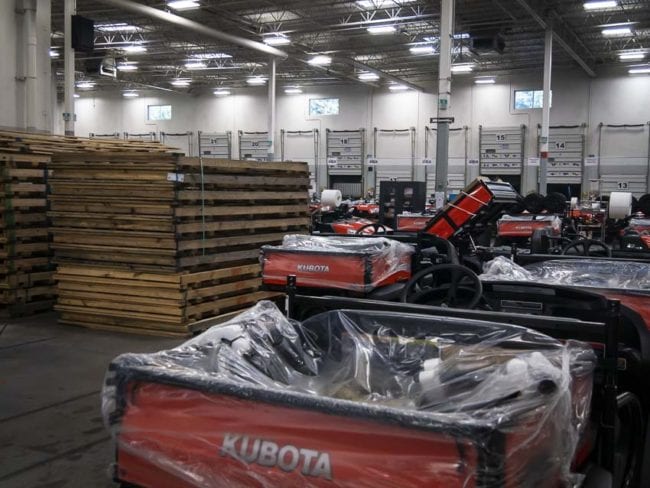UTVs or utility vehicles have been around for a while. They quickly drifted into two primary categories of utility vehicle and recreational/sports vehicles. Lately, however, there’s been a clamor for more “multipurpose” vehicles that deliver some utility, but with greater speed. The Kubota Sidekick UTV is the company’s answer to ranchers, farmers, and others who want to hit speeds of 40MPH while still retaining the ability to haul up to 1000 pounds of material. Our recent experience let us experience building the Kubota sidekick for ourselves. No, we didn’t get to actually build one, but we did get to follow the vehicle through nearly every step of the process in KMA’s Gainesville, Georgia facility.
The KMA company employs over 1,200 local workers. The plant houses 4 main buildings to handle turf, UTV, and more. We spent most of our time in building #4 where Kubota manufactures most of their UTVs. 90% of the products out of these buildings ship to the United States and Canada. Today, approximately one-half of all Kubota-branded equipment sold in the United States is manufactured or assembled in the state of Georgia.
Building the Kubota Sidekick UTV
We got to visit the Kubota Sidekick factory where they manufacture the various styles of the RTV-XG850 multipurpose utility vehicle. The process of manufacturing seemed pretty straightforward, but nothing about the KMA facility came across as simple. More than 80 automated vehicles are used to pull products through the factory. They have sensors for protection, but they follow pre-marked paths throughout the facility.
Receiving & Picking
Kubota receives the required components and materials from their suppliers and picks or sorts them as needed for their internal process. This includes raw materials for framing, tires—even barrels of Line-X for their Sidekick bed options. All of this follows an extremely regimented schedule. In fact, suppliers deliver parts such as tires in sequence in order to keep the production process smooth. Diesel engines and transmissions come from Kubota Japan while some other parts arrive from other international sources.
Welding the Kubota Sidekick UTV Frame
Next, welding takes place to create the frame and components. Sparks flew off steel as we walked past. Lots of manual work gets done in the KMA plant. In fact, robotics seemed limited to their guided vehicles, Line-X application, painting, and some very specific welding processes.
E-coating and Powder Coating the Frame Components
After welding, KMA E-coats the parts, which places a sort of primer on the metal in preparation for the powder coating process. The E-coat process resembles a cross between plating and painting. KMA submerses the metal frame in a water-based solution that contains a paint emulsion. Next, they apply an electric voltage to the part. This causes the paint emulsion to condense onto the part. The amount of voltage actually determines the thickness of the paint. Right after this, workers applied the powder coat, which further protects the frame against rust and gives it that nice textured look. The conveyor moved the frames past the powder coat process into an area where they baked in an oven.
This process utilizes one of three conveyers which move parts throughout the facility. The sophisticated manufacturing process has Kubota making various models simultaneously in these assembly lines. We saw that they utilized lots of LCD monitors to report operational efficiency and monitor downtime (some required for process changes).
The assembly of the next several chassis, engine, and cab components followed next as the UTV vehicles moved through the conveyor.
Finally, the factory crates the Kubota Sidekick RTV-XG850 for shipment to dealers.
Typically, these Kubota Sidekick UTVs ship directly to dealers for sale. Trucks come and receive them throughout the day.
Wrapping Up the Tour
The KMA plant tour showed us that manufacturing in the United States is alive and well. Currently, the assembly process runs one shift per day, but that can change as needed. We asked about quality control, and KMA handles that by taking random samples from the line and doing a complete disassembly process.
KMA currently produces over 200,000 units each year across five main manufacturing facilities—that includes more than just UTVs. This facility has the ability to produce 75,000 units annually at full capacity. Hopefully, Pro Tool Reviews can review a Sidekick on-site this year to see how well they perform. Until then, we hope you enjoyed our inside look at building the Kubota Sidekick UTV.

